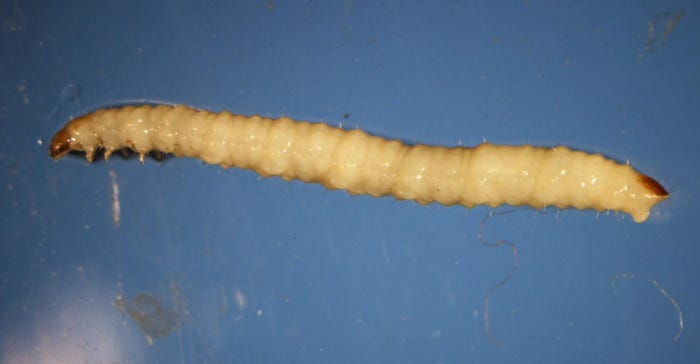
Corn rootworm numbers continue to track higher every year, and farmers should have a control strategy when selecting seed according to Jim Lappin, crop marketing manager for corn with AMVAC Chemical Corp.
"If we know one thing, it is that every year is different when it comes to corn rootworm pressure," Lappin says. "It is better to plan to prevent it than get behind in treatment."
The corn rootworm is known as the "billion-dollar bug." USDA estimates the damage caused by the pest and costs associated with controlling it typically total $1 billion annually — including $800 million in yield loss and $200 million in treatment expense.
Protect crop
Typically, the heart of corn rootworm damage is mostly seen along the I-80 corridor from Nebraska to northern Indiana. However, corn rootworms are finding their way south as farmers plant corn-on-corn acres.
In areas with high corn rootworm numbers, soil-applied insecticides are one tool in combating the pest. These insecticides are applied to the soil at planting to control larvae, or they are applied to the plant during the growing season to prevent adults from laying eggs that turn into larvae that damage the corn roots the following season.
 TINY TROUBLE: Farmers should be on the lookout for corn rootworm larvae in the soil this year. Winter and spring weather will determine the levels of corn rootworm this year.
TINY TROUBLE: Farmers should be on the lookout for corn rootworm larvae in the soil this year. Winter and spring weather will determine the levels of corn rootworm this year.

This year's weather during winter and spring will impact the survival of eggs. Each adult can lay up to 1,000 eggs in the soil. The larvae survive during mild winters. Too much moisture in the spring will kill them. Those that survive feed at the roots, resulting in lodging or goosenecking of plants and, ultimately, yield loss.
Plan ahead
Lappin says farmers should plan for insect control while they are purchasing this year's seed. He says first pick a corn hybrid. "If you are trying to reduce seed costs this year, perhaps you plant conventional hybrids," he says.
Then design an insect strategy around the hybrid, not vice versa. If using a conventional seed, Lappin says granular or liquid insecticides offer control. However, even if farmers are using stacked trait hybrids, these same insecticides offer supplemental protection. In AMVAC studies, he has seen a 10 bushel per acre advantage when using granular or liquid on top of single or double stacked below ground traits.
"Whatever seed is in your portfolio, make sure you have a plan for insect control that matches it," he adds. "Talk with your agronomist about your options."
About the Author(s)
You May Also Like






